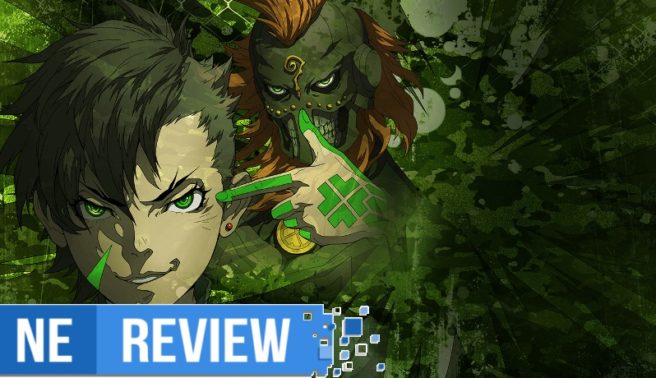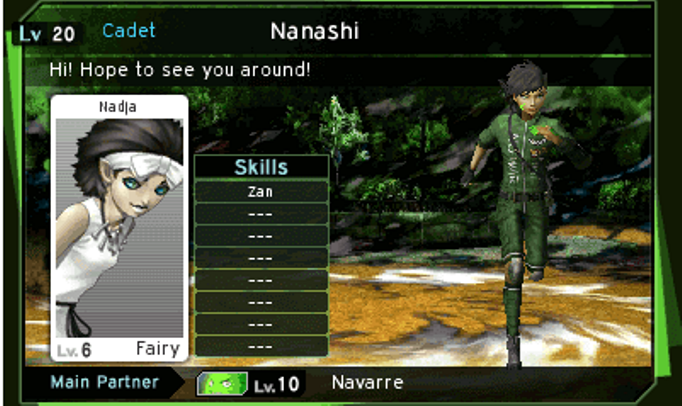[Review] Shin Megami Tensei IV: Apocalypse
System: 3DS
Release date: September 20, 2016
Developer: Atlus
Publisher Atlus
With Shin Megami Tensei IV: Apocalypse, one of the finest Japanese RPGs to be released on the 3DS gets a gigantic and apocalyptic semi-sequel. Everything you know and love about Shin Megami Tensei IV and the series’ past entries are here, but in a vastly improved format. The game is meant to be accessible to players of all types, whether you’re here for the grind, the story, the challenge, the exploration, or a little bit of everything.
Shin Megami Tensei IV: Apocalypse takes place in a future Tokyo quite a few years after the events of Shin Megami Tensei IV, where angels and demons have overrun the entire city and enveloped Japan with a huge rock in the sky that’s kept citizens from seeing the sun, causing most of nature to wither. It’s been in this dilapidated state for so long that the sun and anything remotely vibrant that we see in our day-to-day lives have practically become myth and have only been seen by very few – assuming they’ve lived to tell the tale. Flynn and the crew of protagonists from Shin Megami Tensei IV are looked up to as “saviors” in Apocalypse, where they do their best to defend all of inhabitants of Tokyo from irate angels and demons while trying to rid of the rock in the sky and bring back normalcy to the people of Japan. They are the warriors that govern, the elite Demon Hunters, while there are others of lower rank making sure things run smoothly in each district and the people that live in them. So where do you come into all of this, Nanashi?
You and your friend Asahi want to help contribute to making civilization a better place and are eager to become Demon Hunters. While becoming a recruit, the game takes advantage of this training by giving you a tutorial on the mechanics of Shin Megami Tensei IV: Apocalypse and what to expect moving forward. If you’ve given the series a shot before, you already know what to expect as it has the same demon recruitment by conversing with the enemy, as well as a party of four (including yourself) and a stock that’s expandable so you can switch demons in and out any time while out on the field or in battle.
While talking to demons can somewhat be a pain as there are occasionally no clear-cut ways on how to respond, you can enhance the chances of them becoming your ally by unlocking Apps. Apps, just like in Shin Megami Tensei IV, are back and serve as a way to help expand your skills, buff and debuff friends and enemies, among other things. It’s a neat way to tailor the experience of the game to your liking, but you’ll need to spend App Points to do so. While the main way to obtain them is by leveling your character, you’ll occasionally get them by completing some objectives. It’s somewhat of a grind having to get a good amount, but with how fun the game is, it makes it worthwhile and you have multiple ways to emsure you’re getting the Apps that you want to help you as you go on your journey. From skill expansions to sweet talking skills and being able to fuse demons more powerful than what you’re capable of (which is normally no higher than your current level without the app unlocked), Apps go a long way. They should be used strategically to best fit your play style as the points become increasingly precious as you get higher levels since the experience you’ll need to gain another level is quite high after a certain point. With Apps, I certainly felt more powerful unlocking the ones that best fit my needs as I played through it.
As with a lot of the Shin Megami Tensei games and its spin-offs, your smartphone is your hub for everything you need for management from your Apps to demons to partners and so on. The smartphone is to the point, and has the same layout as Shin Megami Tensei IV, making players of the previous game more than comfortable using it. For new users, it’s an easy learning curve, and while the menus within them are plentiful, they’re intuitive and to the point so you never feel overwhelmed.
One feature I found myself messing around with quite a lot was the DDS card exchange functionality. By using this, you can connect with other players, making it fairly convenient for those that mainly play their handheld games at home rather than on the go, or happen to live in low-populated areas. The majority of my hits came from Japan since Apocalypse has been out there for a while now. You’ll exchange cards with up to ten other players, and in these cards you can attach a demon to them and decide if you want to enhance them or fuse them with a random demon, or DDS as it’s called in the game. While it seems like this would be an easy way to abuse fusions and buffing your current demons on hand, it really isn’t. The game limits you to feature every two hours of in-game time, so if you put your 3DS in sleep mode or play another game and two hours later you come back, don’t expect it to be made available. You’ll have to have been actively playing for two hours until it’s available again. I really enjoyed the feature, and it’s reminiscent of the cards Monster Hunter provides for StreetPass, where you can have your character on it as well as a short message along with displaying your stats, playtime, and more. The game overall just has a clean way of explaining things and introducing features that are straight-forward and deep without feeling too complex or making it feel as if only veterans of the series would understand.
While there are certainly a lot of things that carried over from Shin Megami Tensei IV into Apocalypse – including virtually the same UI – the main element that makes this new game so incredibly immersive compared to its predecessor is the way Japan, each district’s hub, and the dungeons are so well designed and fun to explore. While I adore JRPGs with an immeasurable love, dungeons in many games tend to be boring and visually mundane. They’re all just filled with rock with no real landmarks and don’t contain anything particularly memorable, making for a very banal experience. I like to have something to look forward to whenever I enter a new area or dungeon in a game, and Shin Megami Tensei IV: Apocalypse always keeps you on your toes with its new vibrant locations and gives you a vast amount of stuff to look forward to; even the gritty and gross locations have a certain panache about them that’s admirable. There are even certain locations you may not be able to access right away do to skills you’ll have to obtain later down the line, requiring you to come back at a later date and explore even more. Every location in Shin Megami Tensei: IV Apocalypse has its own unique personality and set of demons, which is constantly making the game feel fresh as you go through it.
Despite the heavy grind, as someone who likes to explore, it all came naturally, and before you know it you’ll be at a decent level to take on the next big demon or boss without having to fully worry about being wiped-out, assuming you play your cards right. The game has three different difficulty settings: Skirmish (Easy), Conflict (Normal), and War (Hard). No matter which one you choose, the story and quest rewards will not change, so choose one that best fits your leisure. Having flipped through all of the modes, which you can do at any given point in the game, more experienced RPG players will be able to enjoy Apocalypse on Conflict, but for lifelong Shin Megami Tensei fans that want to truly feel like a God by working for it, War is your go-to choice. The main differences between them tend to mostly be whether or not critical hits happen, smirks occur, and chance of status ailments are in your favor or the enemies, as well as the ability (or inability in War’s case) to escape battles.
As someone who’s always craving fresh material in games, big or small, and loves RPGs to death, it’s truly rapturous when you come across a game that makes you love the genre all over again, and Shin Megami Tensei IV: Apocalypse is that game. While the 3DS has a great selection of RPGs, the frequent implementation of chibi art can be off-putting at times. Because Shin Megami Tensei IV: Apocalypse uses normal, human-sized character models, it already makes it more alive and immersive than ever before and gives adult 3DS gamers a feeling of representation and expression. The game is mostly dark in its tonality, but the writing is great and keeps a good amount of humor in there to lighten the mood when things get hectic, and the punchlines are always great. You feel connected with everyone you meet, giving everyone and everything a purpose, and making you feel like a superhero in training as you try to take back the city of Tokyo, and subsequently Japan, from the demons that have caused such ruin over the last few years.
Shin Megami Tensei IV: Apocalypse is yet another amazing entry in the long running series from Atlus that deserves to be in the hands of all JRPG enthusiasts, whether you’re a veteran or newcomer. From the plot to the character development, the soundtrack to the art style, and the incredibly addictive gameplay from beginning to end, Shin Megami Tensei IV: Apocalypse is one of the finest RPG releases to come out in recent memory – not just for the 3DS library, but for the genre in general.

While Shin Megami Tensei IV: Apocalypse in a way continues after the events of Shin Megami Tensei IV from back in 2013, it’s not required to have played it to fully enjoy everything Apocalypse has to offer. It gets you up to speed within the first hour, and you become acquainted with the characters from the previous title relatively quickly. Anything that’s touched upon prior to Apocalypse is explained in a concise and elaborate fashion. Between the layout of the UI to the progression system, the awesome art implemented to the wonderful apocalyptic world Atlus has built, Shin Megami Tensei IV: Apocalypse serves as an ineffable follow-up to Shin Megami Tensei IV, and has cemented itself as one of the top RPGs the 3DS has seen.



